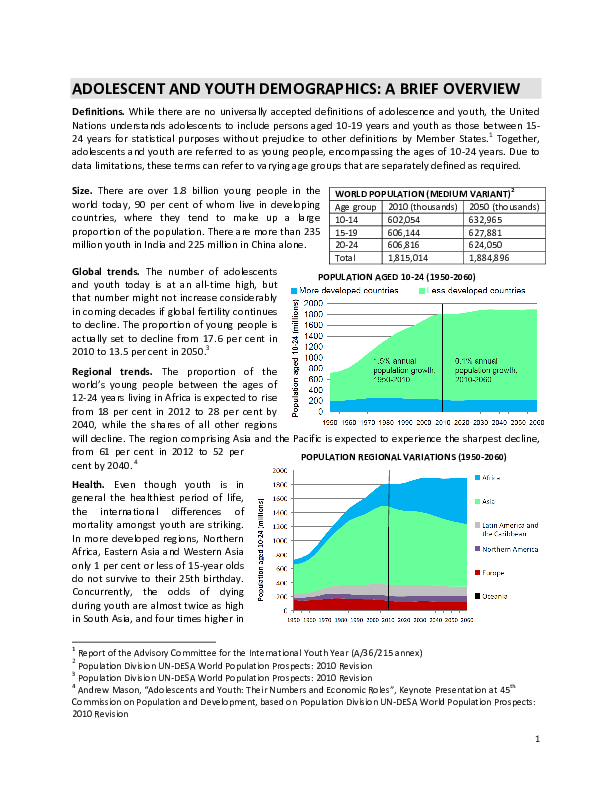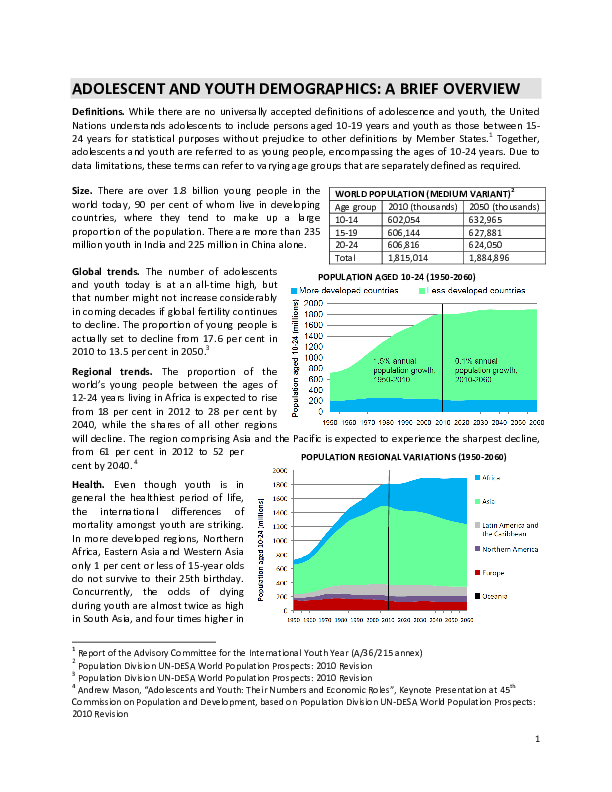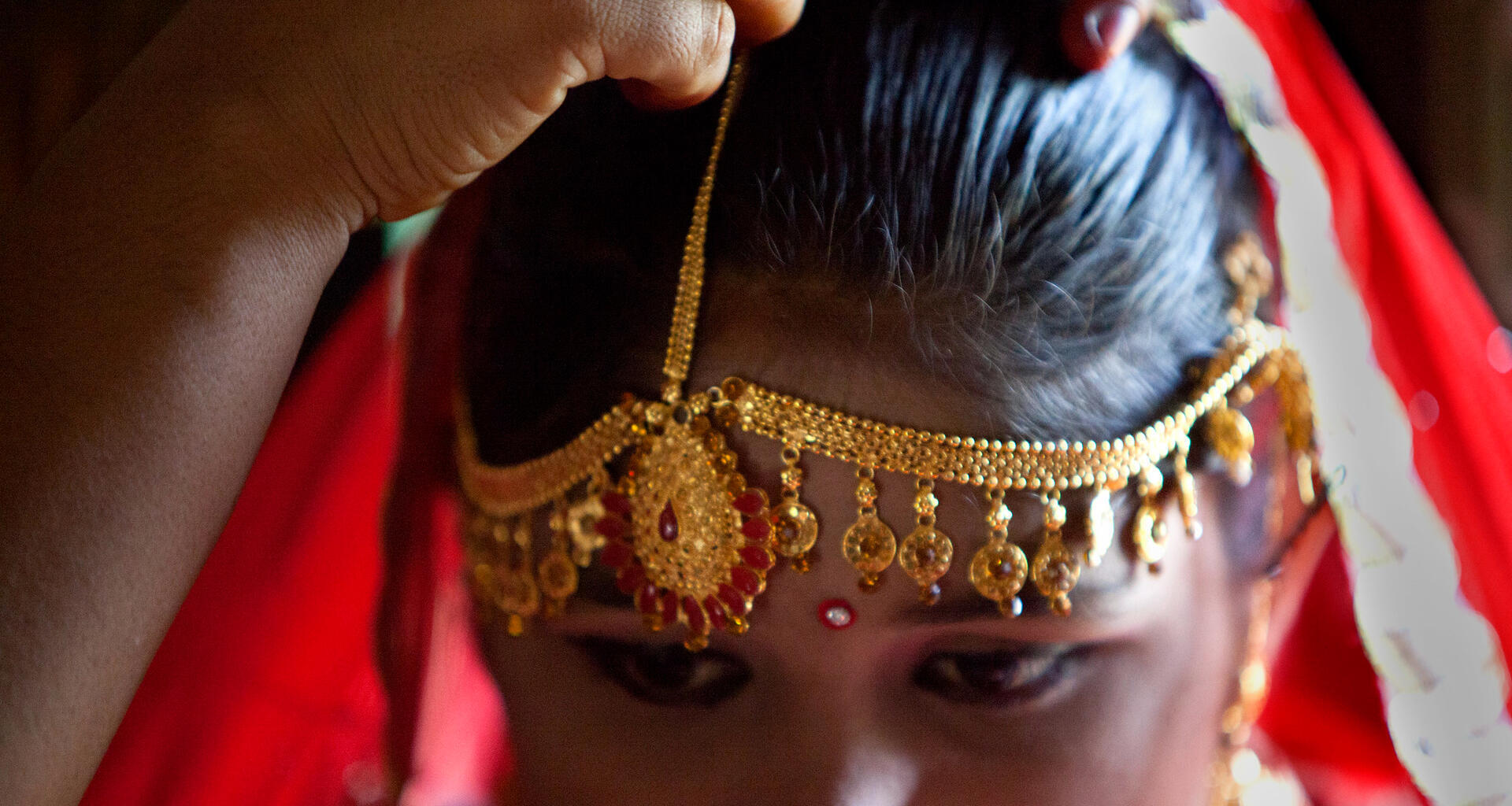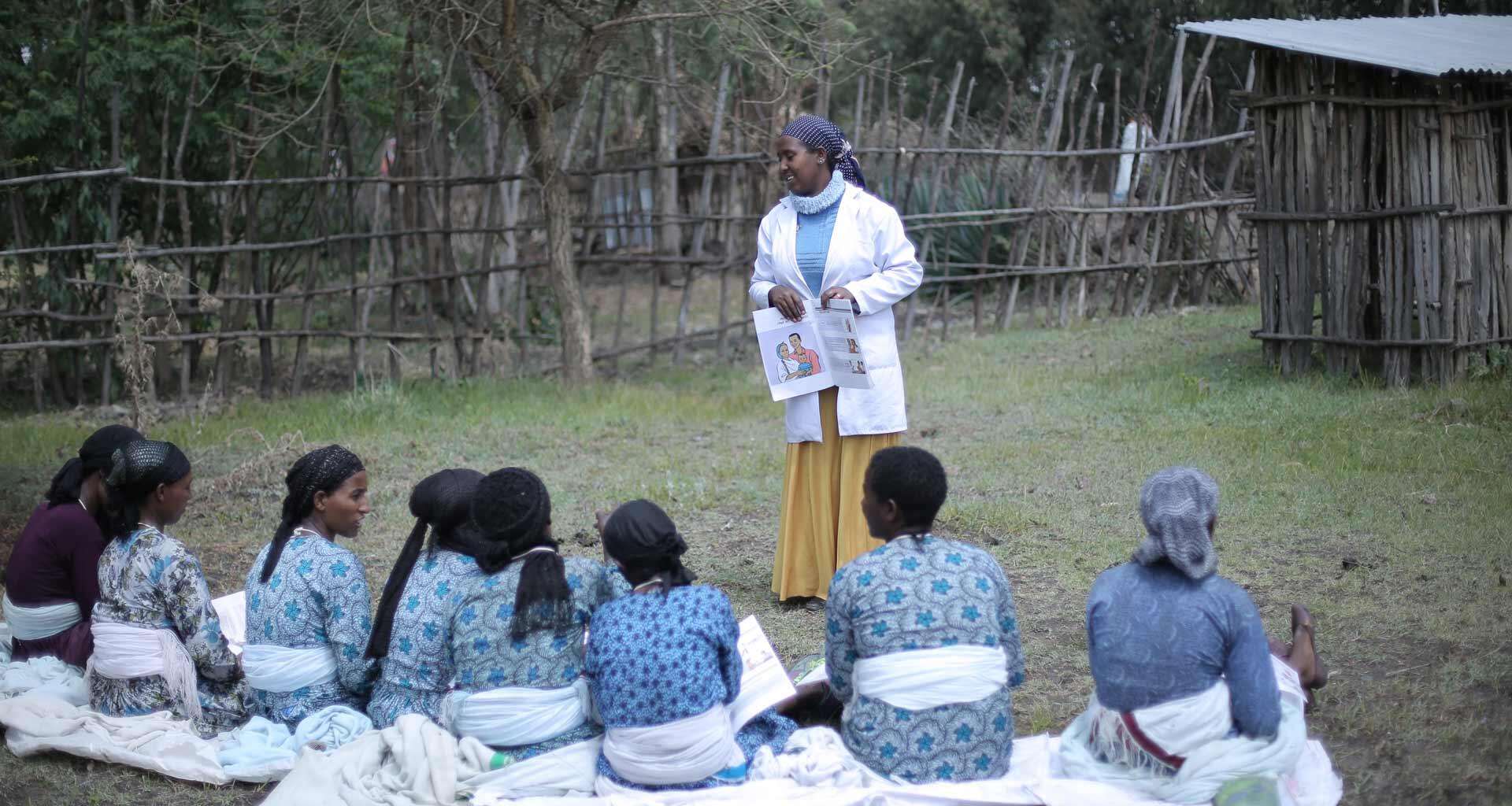Every day in developing countries, 20,000 girls under age 18 give birth. This amounts to 7.3 million births a year. And if all pregnancies are included, not just births, the number of adolescent pregnancies is much higher. When a girl becomes pregnant, her life can change radically. Her education may end and her job prospects diminish. She becomes more vulnerable to poverty and exclusion, and her health often suffers. Complications from pregnancy and childbirth are the leading cause of death among adolescent girls. Adolescent pregnancy is generally not the result of a deliberate choice – these girls often have little say over decisions affecting their lives. Rather, early pregnancy is a consequence of little or no access to school, information or health care. UNFPA works to address these issues by focusing on the protection and fulfilment of girls’ rights. This includes supporting comprehensive sexuality education and sexual and reproductive health care to help girls avoid pregnancy. UNFPA also advocates supporting girls who become pregnant so they can return to school and reach their full potential.
A matter of human rights
Early pregnancy and motherhood are closely linked to issues of human rights. A pregnant girl who is pressured or forced to leave school, for example, is denied her right to an education. A girl who is prevented from accessing contraception or reproductive health information is denied her right to health.
At the same time, girls who are vulnerable are more likely to become pregnant. In every region of the world – including high-income countries – girls who are poor, poorly educated or living in rural areas are at greater risk of becoming pregnant than those who are wealthier, well-educated or urban. This is true on a global level, as well: 95 per cent of the world’s births to adolescents (girls aged 15-19) take place in low- and middle-income countries. Every year, some 3 million girls in this age bracket resort to unsafe abortions, risking their lives and health.
Girls who lack choices and opportunities in life, or who have limited or no access to sexual and reproductive health care, are more likely to become pregnant. Girls forced into child marriage – a violation of their human rights – are also more likely to become pregnant. In developing countries, nine out of 10 births to adolescent girls occur within a marriage or a union.
Health consequences
Pregnancy can lead to devastating health consequences for girls. Many adolescents are not yet physically ready for pregnancy or childbirth, and are therefore more vulnerable to complications. Additionally, adolescents who become pregnant tend to be from lower-income households, and many are nutritionally depleted, increasing the risks associated with pregnancy and childbearing.
Tens of thousands of adolescents die annually of causes related to pregnancy and childbirth. In fact, these are the leading cause of death among adolescent girls, aged 15-19, globally.
Health problems are even more likely if a girl becomes pregnant too soon after reaching puberty. In low- and middle-income countries, the risk of maternal death for girls under age 15 is higher than for women in their twenties. These girls also face health risks such as obstetric fistula, and their babies face greater risks as well.
Effects on education and income
Adolescent pregnancy takes an enormous toll on a girl’s education and income-earning potential. Many girls who become pregnant are pressured or forced to drop out of school. Girls not in school are also more likely to become pregnant.
Leaving school jeopardizes a girl’s future economic prospects and excludes her from other opportunities in life. By contrast, girls who remain in school are better prepared for jobs, livelihoods and life's other transitions. Education also raises their status in their households and communities, and gives them more say in decisions that affect their lives. An educated girl is less likely to enter into a child marriage. She is also better able to delay childbearing, and is more likely to have a healthy pregnancy, with better outcomes for her future children.
The way forward
Many countries are working to prevent adolescent pregnancy. Unfortunately, these efforts often implicitly fault girls and aim only to change their behaviours, rather than address the underlying drivers of early pregnancy. Such drivers include gender inequality, poverty, sexual violence and coercion, child marriage, social pressures, exclusion from educational and job opportunities, and negative attitudes about girls. Many efforts also neglect to account for the role of boys and men.
A more holistic approach is required to support girls' rights and to empower them to avoid early pregnancy. Such an approach should include the provision of age-appropriate comprehensive sexuality education for all young people; investment in girls’ education, especially through the secondary level; the prevention of child, early and forced marriage, sexual violence, and coercion; the building of gender-equitable societies by empowering girls and engaging men and boys; and measures to ensure adolescents’ access to sexual and reproductive health information as well as services that welcome them and facilitate their choices.
What is UNFPA doing?
UNFPA works with partners, including governments, civil society and youth-led organizations, to extend access to sexual and reproductive health information, counselling and services, including contraception, to all young people. UNFPA also advocates the integration of comprehensive sexuality education into school curricula, and supports programmes promoting gender equality, especially those reaching vulnerable adolescents and those that support young mothers.
For example, UNFPA has worked with the Caribbean Community (CARICOM) to develop a strategy on reducing adolescent pregnancies, involving partners at all levels, from community members to schools and young people themselves.
UNFPA also works within communities to end child marriage and empower girls, measures that reduce adolescent pregnancies. The Action for Adolescent Girls programme, for example, is reaching thousands of girls and community members in Ethiopia, Guatemala, India, Mozambique, Niger, Nigeria, Sierra Leone and Zambia with information about human rights, sexual and reproductive health, and the consequences of child marriage and adolescent pregnancy. The Safeguard Young People programme in Southern Africa reaches out to adolescent boys and girls with health information and life skills education.
Updated 19 May 2017.






